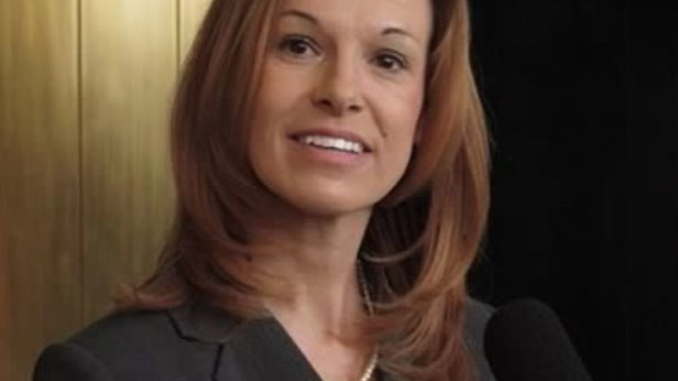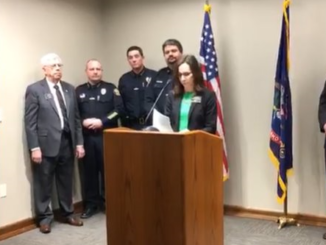
North Dakota’s Department of Public Instruction (DPI) received a black eye of sorts late last month from an education think tank known as the Thomas B. Fordham Institute. In ranking the 17 ESSA plans submitted so far by 16 states and the District of Columbia to the Department of Education, the Fordham Institute found that North Dakota’s was the worst.
Known as the Every Student Succeeds Act (ESSA) plan, it was developed as a result of ESSA legislation passed by the United States Congress in December of 2015. The alleged purpose of the ESSA legislation was to replace its controversial predecessor No Child Left Behind (NCLB), while maintaining testing requirements and shifting more responsibility back to the states.
According to DPI’s own web site:
“The plan was written by a group of more than 50 people, including teachers, parents, school administrators, school board members, business people and legislators.” The committee was appointed by North Dakota’s Superintendent of Public Instruction Kirsten Baesler in the Spring of 2016. And after 10 months, multiple drafts, and periods of public comment; DPI’s final plan was dated May 1, 2017.
The first red flag for me on this issue came on August 7th when the Bismarck Tribune reported that the U.S. Department of Education had given feedback to DPI and that “Education Department officials [had] requested additional information on several parts of the state’s plan”.
That same day I received information from a political friend that North Dakota’s plan had not only been rated poorly, but that it was the worst of all those submitted. Eventually I was able to obtain the Fordham Institute’s report that was responsible for the claim.
To achieve the accountability required by the ESSA, the Fordham Institute determined three categories by which they rated each plan:
“1. Assign annual ratings to schools that are clear and intuitive for parents, educators, and the public;
“2. Encourage schools to focus on all students, not just their low performers; and
“3. Fairly measure and judge all schools, including those with high rates of poverty.” Overall, their report is positive. In fact, it says this:
“…we find that, for the most part, states are moving in a positive direction under ESSA. In fact, in our view, seven states have proposed ratings systems that range from good to great.”
Then it says this:
“Only one state, North Dakota, misses the mark entirely, earning three weak ratings.”
And they created a chart to illustrate their findings:

To add insult to injury, not only was North Dakota the sole state with a “weak” rating in all three categories, but
no other state had more than one. Ouch.
In a follow up article yesterday, the Bismarck Tribune reported that the ESSA planning team had “met on Monday to go over the recommendations and provide feedback”. The recommendations, of course, had come in the letter from the Department of Education and was accompanied by nearly 50 pages of “ feedback from peer reviewers“.
As if the Fordham Institute’s scathing report wasn’t bad enough, the peer review was brutal. On each section of DPI’s ESSA plan, four peer reviewers would vote whether they believed it met the expectations or not. In almost half of the nearly 50 sections, they unanimously voted that the plan did not“meet all the requirements”.
According to Superintendent Baesler, Monday’s meeting went “really well” and:
“Generally speaking, the stakeholders that met (Monday) morning did appreciate and understand the importance and the value of the recommendations from the Department of Education to truly clarify and articulate our intention and our purpose of this plan.”
The revisions made by the committee appointed by Superintendent Baesler are due this coming Monday. Can they satisfy the Department of Education by making what appears to be fairly extensive changes and clarifications in such a short period of time? We’re going to find out.
With DPI’s dishonesty regarding the “new” Math and English standards (they’re still Common Core without the label), their nearly two month tardiness on selecting a state testing vendor for the subjects of Math and English, and now a horrendous review on their ESSA plan; I cannot help but wonder what on Earth is happening in our agency that oversees education in the state?
Sources:
1. https://edexcellence.net/publications/rating-the-ratings?utm_source=Fordham+Updates&utm_campaign=018a143935-EMAIL_CAMPAIGN_2017_04_18&utm_medium=email&utm_term=0_d9e8246adf-018a143935-71483209&mc_cid=018a143935&mc_eid=8ed8055c4f 2. http://bismarcktribune.com/news/local/education/north-dakota-receives-federal-feedback-on-education-plan/article_8f294d28-64d4-5ffc-8817-01cb05f979e4.html 3. http://bismarcktribune.com/news/local/education/dpi-begins-revising-state-education-plan/article_ff68b634-2cb5-5567-b6dc-0b5a6aea63e6.html 4. https://www.nd.gov/dpi/SchoolStaff/ICR/press_releases/BaeslerSeeksCommentOnEducationImprovementPlan/ 5. https://www.nd.gov/dpi/uploads/1494/FinalNDESSAPlanforSubmission.pdf
6. https://drive.google.com/file/d/0B4pCzrnu4TuWOWUyd1FFaTRET3Fla2NqUlhhUEdrVTVza0U0/view 7. https://theminutemanblog.com/single-post/2017/04/12/The-Great-Deceiver-the-Not-so-New-State-Education-Standards 8. https://theminutemanblog.com/single-post/2017/08/11/DPI-Update-Bid-Process-for-State-Assessments-Delayed-to-September





